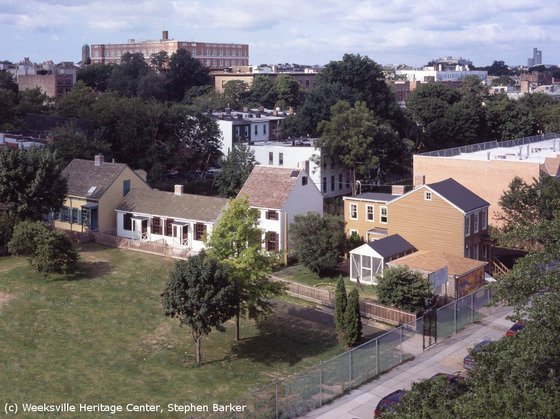Summary | Excerpt | Reading Guide | Discuss | Reviews | Beyond the Book | Read-Alikes | Genres & Themes | Author Bio

This article relates to Libertie
 Greenidge's character Dr. Cathy Sampson in Libertie is based on the real-life story of Dr. Susan McKinney Steward, the first Black woman to become a medical doctor in New York State. The novel's setting, meanwhile, is based on the historical settlement of Weeksville, which was located in what is now the Crown Heights neighborhood in the New York City borough of Brooklyn.
Greenidge's character Dr. Cathy Sampson in Libertie is based on the real-life story of Dr. Susan McKinney Steward, the first Black woman to become a medical doctor in New York State. The novel's setting, meanwhile, is based on the historical settlement of Weeksville, which was located in what is now the Crown Heights neighborhood in the New York City borough of Brooklyn.
Weeksville was founded in 1827, shortly after New York abolished slavery, and was named after longshoreman James Weeks, who bought several plots of land in the area from Black abolitionist Henry C. Thompson. The settlement flourished and became a destination for free Blacks and newly escaped enslaved people, especially during the decades before the Emancipation Proclamation.
As Greenidge depicts in her novel, Weeksville likely played a role in the Underground Railroad; after escaping slavery, people would first arrive by boat in south Brooklyn and would head up to settle in Weeksville shortly thereafter. According to census records from the 1850s, a third of Weeksville residents had been born in the South; undoubtedly at least some had escaped from slavery.
By the 1850s, Weeksville was a thriving community of more than 500. It offered residents opportunities for home ownership, entrepreneurship and employment. It had its own churches, schools, and Black-owned businesses, and its own newspaper, The Freedman's Torchlight.
Over the next three-quarters of a century, however, the rapidly growing borough of Brooklyn began to encroach upon the small-town atmosphere of Weeksville, and many of its landmarks fell victim to new development projects, including rowhouses and highways.
Amid all this rapid urban development, the history of Weeksville was largely forgotten, but in the late 1960s, a couple of researchers from the Pratt Institute found an archival reference to it and chartered a plane to fly over the area looking for remnants of the lost community. From the air, they spotted a row of four wood-frame houses from the era, still intact but slated for demolition. In order to preserve this fragile but historically important site, the Weeksville Project was born, which over the decades expanded into the Weeksville Heritage Center, dedicated to preserving the neighborhood's architectural and historical significance and to educating the public about its role in Black American history.
For those interested in a very different fictional take on Weeksville's past and present, Alyssa Cole's recent thriller When No One Is Watching offers a tense yet thoughtful consideration of what can happen when so-called progress comes at the expense of a site with historical significance to marginalized communities. After learning about the history, rediscovery and hard-won preservation of Weeksville, readers might look at their own urban neighborhoods and wonder what historical sites and stories are going unrecognized.
Rediscovered houses of Weeksville, courtesy of Weeksville Heritage Center
Filed under Places, Cultures & Identities
![]() This "beyond the book article" relates to Libertie. It originally ran in April 2021 and has been updated for the
March 2022 paperback edition.
Go to magazine.
This "beyond the book article" relates to Libertie. It originally ran in April 2021 and has been updated for the
March 2022 paperback edition.
Go to magazine.
Any activity becomes creative when the doer cares about doing it right, or better.
Click Here to find out who said this, as well as discovering other famous literary quotes!
Your guide toexceptional books
BookBrowse seeks out and recommends the best in contemporary fiction and nonfiction—books that not only engage and entertain but also deepen our understanding of ourselves and the world around us.